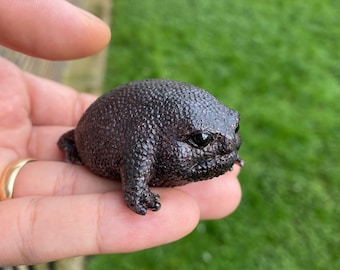Obtain Your Hands on a Rain Frog for Sale: Experience the Pleasure of One-of-a-kind Pet Ownership!
Obtain Your Hands on a Rain Frog for Sale: Experience the Pleasure of One-of-a-kind Pet Ownership!
Blog Article
The Ideal Reptile Enclosures: How to Produce the Perfect Environment
Producing the excellent habitat for reptiles is not practically placing them in a container or unit; it involves a thoughtful consideration of different variables that add to their general health. From the size of the enclosure to the type of substrate utilized, every element plays a critical role in offering an atmosphere where your reptile can flourish. By comprehending the specific needs of your reptile species and executing the best habitat arrangement, you can ensure their health and happiness in captivity.
Picking the Right Enclosure Size
When choosing a room size for reptiles, it is imperative to consider their natural habits and area demands to ensure their wellness and health. Different reptile types have differing requirements when it concerns habitat space. Arboreal types like chameleons or tree snakes need vertical space for climbing and perching, while terrestrial species such as bearded dragons or leopard geckos need more floor area for discovering and thermoregulation. Marine turtles like red-eared sliders require rooms with both water and land areas for swimming and basking.
A general regulation of thumb is to give adequate room for the reptile to display all-natural actions, such as basking, hiding, climbing, and foraging. By meticulously thinking about the details needs of the reptile types in concern, owners can produce an ideal and improving habitat that promotes overall wellness and urges natural actions.
Establishing Appropriate Heating Components
To ensure the well-being and health and wellness of reptiles in their rooms, it is vital to carefully establish appropriate heating aspects. Reptiles are ectothermic animals, implying they depend on exterior warmth resources to manage their body temperature level. When establishing burner in a reptile enclosure, it is essential to take into consideration the particular temperature requirements of the species you are caring for. Different reptiles have varying temperature needs based on their natural environment, so it is very important to research and understand these requirements.
One common and effective home heating aspect for reptile enclosures is a warmth light or ceramic heat emitter. These warmth resources can be utilized to create a temperature level slope within the enclosure, allowing reptiles to move in between warmer and cooler areas as required. Furthermore, under-tank hot pad or heat floor coverings can be utilized to provide stubborn belly warm, which is particularly advantageous for reptiles that require added warmth to assist in digestion.
Keeping track of the temperature within the room using a thermometer is important to make certain that the heating components are maintaining the proper temperature level array for your reptile. On a regular basis check and change the burner as needed to develop a healthy and balanced and comfortable atmosphere for your flaky buddy.
Picking Appropriate Lights Fixtures

Supplying the Ideal Substrate
Selecting the appropriate substrate is important for developing a comfortable and suitable environment for reptiles in their enclosures. Some reptiles, such as desert-dwelling species like bearded dragons, grow on substratums like calcium sand or reptile rug, while others, like sphere pythons, favor coconut husk or aspen bed linens to keep moisture degrees.
Prevent substrates that can trigger impaction, such as loose substrates like sand or crushed rock, specifically for reptiles recognized to ingest their bedding. Routinely cleansing and changing the substrate is crucial to ensure a clean and hygienic environment for your reptile.
Decorating for Enrichment and Convenience
Taking into consideration the substrate's function in providing a structure for natural behaviors and keeping an appropriate environment, improving the reptile room with appropriate decors is vital for both enrichment and convenience. Decors such as branches, rocks, hideouts, and synthetic plants not just produce a much more visually enticing environment however additionally serve practical functions. Branches supply climbing up chances for arboreal species, while rocks can work as basking spots for heat. Hideouts provide sanctuary and safety, reducing stress and anxiety levels for the reptile. Artificial plants not just boost the aesthetics yet likewise provide concealing spots and enrichment by permitting the reptile to explore and communicate with its environment. When embellishing the enclosure, it is important to consider the reptile's species-specific demands and habits to create an area that promotes psychological and physical health. By integrating a range of designs that imitate the reptile's natural environment, proprietors can guarantee their pet's comfort and promote their all-natural impulses, ultimately resulting in a better and much healthier reptile.
Conclusion

Developing the excellent environment for reptiles is not just regarding placing them in a container or enclosure; it involves a thoughtful consideration of different factors that add to their overall health.Picking the appropriate substrate is necessary for developing a comfy and suitable setting for reptiles in their rooms. Some reptiles, such as desert-dwelling varieties like bearded dragons, flourish on substrates like calcium sand or reptile rug, while others, like ball pythons, like coconut husk or aspen bed linen to preserve humidity levels.
By integrating a range of designs that simulate the reptile's natural habitat, owners can ensure their pet's comfort and stimulate their all-natural instincts, inevitably leading to a happier and much healthier reptile.
In conclusion, creating the suitable habitat for reptiles includes choosing the ideal enclosure size, discover this heating aspects, lighting components, substratum, and designs.
Report this page